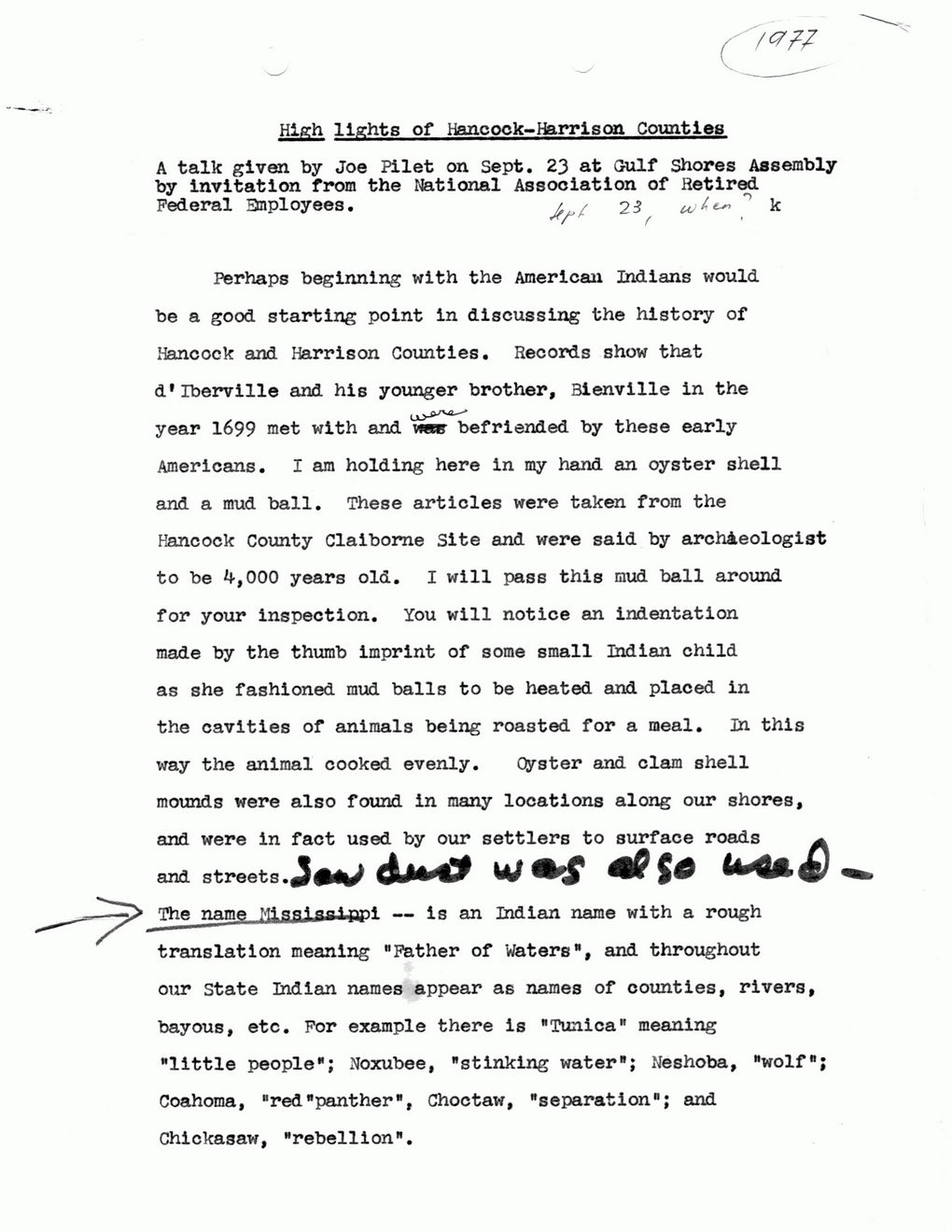This text was obtained via automated optical character recognition.
It has not been edited and may therefore contain several errors.
High lights of Hancock-Harr 1 seal Counties A talk given by Joe Pilet on Sept. 23 at Gulf Shores Assembly by invitation from the National Association of Retired Federal 3nployees. 25 perhaps beginning with the American Indians would be a good starting point in discussing the history of Hancock and Harrison Counties. Records show that d»Iberville and his younger brother, Bienville in the year 1699 met with and wwatMaefriended by these early Americans. I am holding here in my hand an oyster shell and a mud ball. These articles were taken from the Hancock County Claiborne Site and were said by arch4eologist to be ^,000 years old. I will pass this mud ball around for your inspection. You will notice an indentation made by the thumb imprint of some small Indian child as she fashioned mud balls to be heated and placed in the cavities of animals being roasted for a meal. In this way the animal cooked evenly. Oyster and clam shell mounds were also found in many locations along our shores, and were in fact used by our settlers to surface roads and streets.< The namp Nlflfil PP* — is an Indian name with a rough translation meaning "Father of Waters", and throughout our state Indian names appear as names of counties, rivers, bayous, etc. For example there is "Tunica" meaning "little people"; Noxubee, "stinking water"; Neshoba, "wolf"; Coahoma, "red"panther", Choctaw, "separation"; and Chickasaw, "rebellion". fact used by our settlers to surface roads ^ Jwdu**

BSL 1977 To 1980 Pilet-Speech-Hancock-Harrison-Counties-1977-(1)